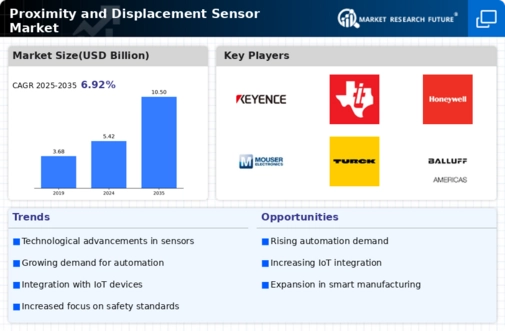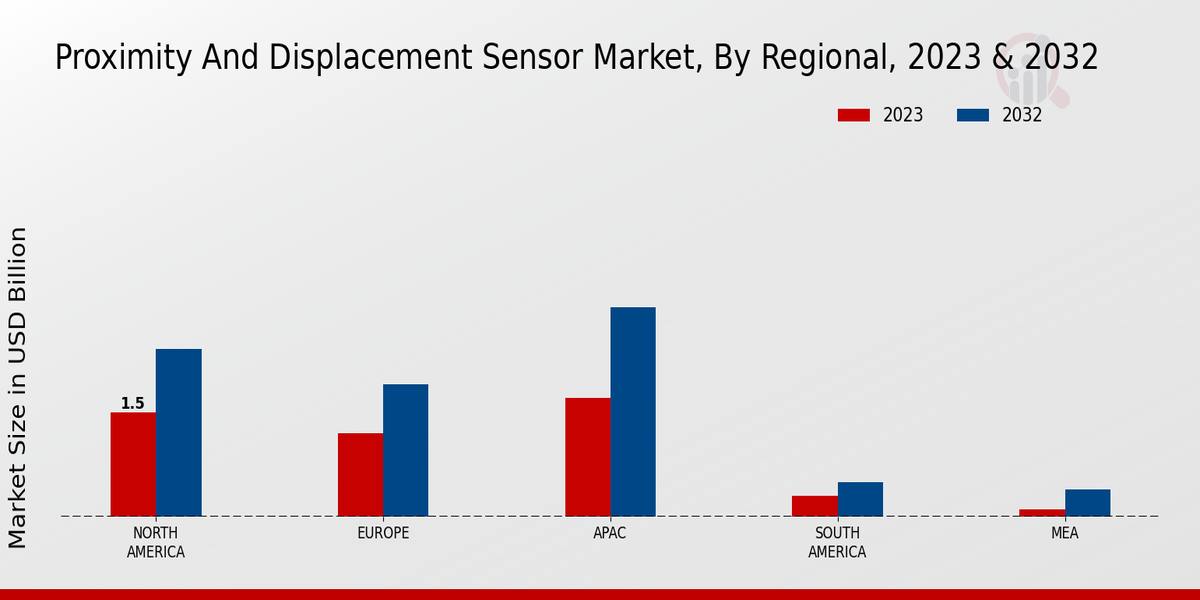Market Growth Chart
Technological Advancements
The Global Proximity and Displacement Sensor Market Industry is experiencing rapid technological advancements, particularly in sensor miniaturization and integration with IoT systems. These innovations enhance the accuracy and efficiency of sensors, making them more appealing for various applications. For instance, the integration of smart sensors in manufacturing processes allows for real-time monitoring and predictive maintenance, which can significantly reduce downtime. As industries increasingly adopt these technologies, the market is projected to grow from 5.42 USD Billion in 2024 to 10.5 USD Billion by 2035, indicating a robust demand for advanced sensor solutions.
Rising Automation in Industries
The Global Proximity and Displacement Sensor Market Industry is driven by the increasing automation across various sectors, including manufacturing, automotive, and consumer electronics. Automation enhances operational efficiency and reduces labor costs, prompting industries to invest in advanced sensor technologies. For example, automotive manufacturers utilize proximity sensors for collision avoidance systems, which are becoming standard in new vehicles. This trend is expected to contribute to a compound annual growth rate of 6.17% from 2025 to 2035, reflecting the growing reliance on automated systems that require precise sensor data.
Growing Demand for Smart Devices
The Global Proximity and Displacement Sensor Market Industry is witnessing a surge in demand for smart devices, which incorporate advanced sensor technologies to enhance user experience. Smart home devices, such as automated lighting and security systems, rely heavily on proximity sensors to function effectively. As consumers increasingly adopt smart technologies, manufacturers are compelled to integrate sophisticated sensors into their products. This trend is likely to propel the market forward, with projections indicating a growth from 5.42 USD Billion in 2024 to 10.5 USD Billion by 2035, as the demand for smart devices continues to rise.
Increased Focus on Safety and Security
The Global Proximity and Displacement Sensor Market Industry is significantly influenced by the heightened focus on safety and security across various sectors. Industries are increasingly adopting sensors for applications such as intrusion detection, safety monitoring, and automated emergency responses. For instance, proximity sensors are widely used in public transportation systems to ensure passenger safety by detecting obstacles. This growing emphasis on safety is expected to drive market growth, as organizations prioritize investments in technologies that enhance security measures, thereby contributing to the overall expansion of the sensor market.
Environmental Regulations and Sustainability
The Global Proximity and Displacement Sensor Market Industry is also shaped by stringent environmental regulations and a growing emphasis on sustainability. Industries are increasingly adopting sensor technologies to monitor environmental parameters and ensure compliance with regulations. For example, proximity sensors are utilized in waste management systems to optimize collection routes and reduce carbon footprints. As companies strive to meet sustainability goals, the demand for sensors that facilitate efficient resource management is likely to increase. This trend may further bolster the market, as organizations recognize the importance of integrating eco-friendly technologies into their operations.














